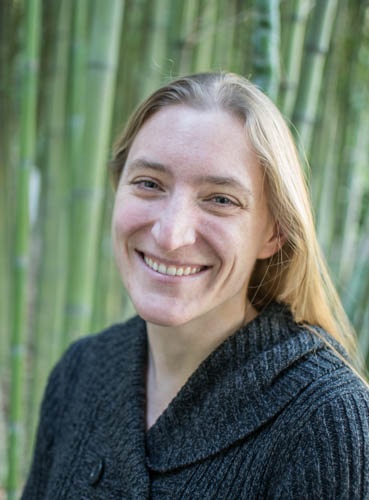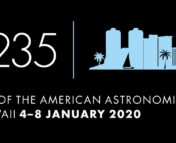In this series of posts, we sit down with a few of the keynote speakers of the 235th AAS meeting to learn more about them and their research. You can see a full schedule of their talks here, and read our other interviews here!
The past decade has seen an explosion of astrophysical survey data. From the Kepler and K2 missions which monitored the sky for nearly a decade to the Gaia mission which accurately maps the positions of stars in the Milky Way, our knowledge of stars has increased dramatically. However, even with this vast wealth of data, stellar models still have some catching up to do in terms of accurately describing diverse populations of stars over their lifetimes.

Dr. Jennifer van Saders is an Assistant Professor of Astronomy at the University of Hawai`i at Mānoa Institute for Astronomy. She will be giving a plenary lecture at #AAS235 next week. van Saders’s work focuses on stellar modeling, specifically with respect to stellar rotation and evolution. Her primary expertise is in gyrochronology, which uses the fact that stars rotate slower as they evolve to determine a star’s age from its rotation period.
“I think there will soon be a reckoning for stellar models,” says van Saders. “Our ability to constrain [stellar models] has improved so much that we can now test all of the things we couldn’t test before [using data from surveys].”
Lately, Dr. van Saders has been thinking a lot about where these models can be improved for stars unlike the Sun. “Ideally we would have a perfect rotation period to age relationship for a diverse population of stars. But right now, the period-age relationship we have is only calibrated for solar-type stars, and that relationship isn’t very well-calibrated for stars much older than the Sun… Although [a rotation-age relationship] is still a promising tool, there are still a lot of unanswered questions surrounding it.” This uncertainty is primarily due to the lack of calibration datasets for non-solar-like stars. She mentions that there are even more outstanding questions for stars cooler than the Sun, where other existing methods for predicting stellar ages, like isochrone fitting, do not work well as a consequence of the slow evolution of these stars. “I want to see where I can push the models in terms of getting a period-age relationship.”
van Saders was always interested in astrophysics. A broad interest in science was still present when she began her undergraduate education at Rutgers University. Her decision to pursue astrophysics was confirmed when she participated in the Aresty Summer Science Program at Rutgers, a program which connects rising sophomores with faculty mentors to involve students in research early on. After working with her faculty mentor, Prof. Chuck Keeton, and several REU mentors throughout undergrad, van Saders decided she would “try and stay in academia for as long as [she] could.” Graduate school further confirmed this, as she narrowed her focus to stellar astronomy while working with Prof. Marc Pinsonneault at The Ohio State University.
Now faculty at University of Hawai`i, van Saders attributes much of her success to a series of excellent mentors. When asked if there was any advice she would give to herself back when she was an undergraduate student, she says “I would tell myself to find a mentor, and learn how to code earlier on.” As far as the perks of an academic job go, van Saders remarks “I get to think about stars all day, it’s great!”
To learn more about Dr. van Saders’s work, check out her talk at 4:40 PM on Tuesday, January 7th at #AAS235!



